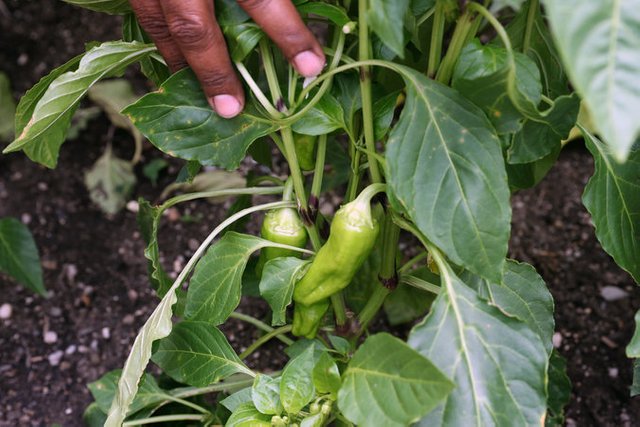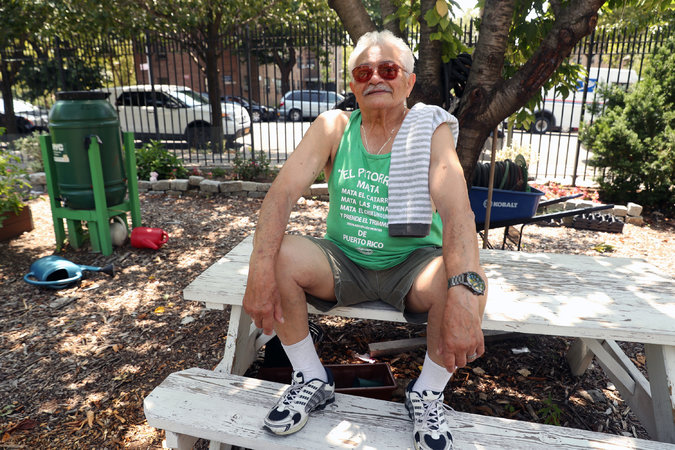
Ephrain Estrida has increased many chillies, brinjal, oka and squash, which he sent to his relatives in Puerto Rico on extra returns.
Although Mr. Estrada himself is a farmer, his donations from his obsolete settings are sprouts: a patch of green in the South Bronx's Budgage and Public Housing Projects. Just one estimate of one of the dozen urban farmers in a community garden, he filled up some soil clay bigger than the child's sandbox with a farm that grew up with his father in a farm in Rico.
"If I knew that now I know, I would have helped my father a lot," Mr. Estrada, 74, a retired cook. "There was more food."
Mr. Estrada is a growing network of community garden in New York City, leading recently recently, an aggression of development has enabled the public's green spaces to become more valuable, as a result, its family has been able to continue the agricultural practice. What Community gardens are a shelter for immigrants and in addition to farms and domestic homes to escape in the summer, food like the South Bronx is the source of crop and leafy vegetables in the desert.

This summer, the Greenhouse Program of the Park Department - the largest community gardening program in the country - has grown from 501 to 553 gardens in 2009. Most of the gardens are owned by the city or on other government property, and are managed by community groups and a 20,000 volunteer garbled corps
In many areas, community gardens are violently faithful defenders who have been gathered in recent years because the city has targeted garden in the Harlem and elsewhere for home-based buildings and private developers have also seen them.
Grantthump director Bill Lososo said that this program has increased efforts to create more community gardens throughout the city, especially in most migrant communities where there are roots in many new agricultural areas. Three years ago, his budget had increased from $ 27 million to $ 29 million a year, and its employees almost doubled to 35 people, who provided free resources such as training and support and plants, cremation grounds and wheels.
"Sometimes when you reach a new place, you have no network that you can tap to support," said Mr. Lawosso. "By joining a community garden, you are joining a network of neighbors who are coming from different backgrounds who can help new members of their community to settle down."
According to Queens College's analysis of census, approximately 3.2 million New Yorkers, or 38 percent of the city's 8.5 million population, are born in other countries. Almost half of the immigrants came from the Caribbean, Central America and South America.
Continue reading the main story of the newsletter sign up
Sign Up for Race / Related Newsletter
Join a deep and provocative campaign with groups of New York Times journalists.
You agree to receive occasional updates and special offers for New York Times products and services.
See recent privacy policies or contact us at any time
In Queens, the number of foreign-born residents is 11 million, of which Brooklyn had 992,255 and bronze 514,360.
In the summer of Brunex the Guardian of New Roots Community Farm, Dominican Republic, Central African Republic, Afghanistan, Gambia, Myanmar and other places in Ivory Coast. In 2012, the garden started with the International Rescue Committee, a refugee service agency and Bronx Green-up, an outreach program in the New York Botanical Garden.
Bronx Green-up director Urusulu Chans said that in the last decade, his program has worked with the growing Caribbean, Mexican, Central America and African Gardens who settled in Bronx. "Community gardens reflect area and local demographics," he said.
Around the Brooklyn City Line, Bangladeshi immigrants have a group garden with poultry, bird peas, tall peas and bitter melon cows. In 2014, the garden was inaugurated to receive a trash-strait lot in a four-year tenure of a local group, Bangladeshi American Community Development and Youth Services.
Samihah Huda, executive director of the group said that there was a part of daily life in the home garden. Prior to moving to New York in 2009, Mrs. Huda, who lives in Dhaka city, grew up on the roof of her apartment house, mango, litchi, spinach and peacock.

Now he can go to the community garden where there are free plans for picking and Hannah painting and story time planning. "This garden is open to everyone," said Miss Huda. "We have never said to have a fence."
United Way Stand Community Garden where Mr. Estrada Plant was started by Bronx residents in 1990 and was rebuilt and expanded by Gro NNC, which operates the city's GreenMonks. It has created 100 community gardens, including 43, between 1975 and 2013.
Marcel Van Wayne said, "There is nothing more beautiful and sophisticated in New York, people around the world are working together to build a better community together," its president said.
The 15,000-square-foot garden is divided into 51 number of boxes which are set for separate cattle, which they imagine. "This is my second home," said Jose Ramos, 89, a retired maintenance worker from Puerto Rico working in the garden every summer.
Alex Gonzalez, a deli worker from Mexico, is in 44 boxes filled with tomatoes, green peas, jarpino pepper and peppo, a silenotril pickup used in Mexican food. She'll get more if she has more space. He also has his wife and his brother's box. "It's fresh," he said. "I like to eat this way."
In the next box, Mr. Estrada has deposited a little green vegetation that brings sweet pepper, named Azi Dulce for his wife's homely coffea dressing. In colder months he makes enough to freeze. "It is very expensive to buy," he said.
Mr. Estrada said that he hated to work in Puerto Rico's family farm because he did not like it. His father would tell him that he was planting on rainy days.
"You have no money, you go to the farm and grab some things then we have lunch," he said. "It was a necessity."
But after a few years, when his brother-in-law brok started to clear a wardrobe to make a community garden, he did not hesitate to pitch.
"I said, 'this garden is going to be my garden,'" he remembers. "Now I am learning from my father who I am going to create my own garden, I was cultivating my blood."
great post
Downvoting a post can decrease pending rewards and make it less visible. Common reasons:
Submit
Just taking this opportunity to say "THANK YOU FOR FOLLOWING ME"
Downvoting a post can decrease pending rewards and make it less visible. Common reasons:
Submit
Really nice initiative
Downvoting a post can decrease pending rewards and make it less visible. Common reasons:
Submit
Good post dear
Downvoting a post can decrease pending rewards and make it less visible. Common reasons:
Submit
Congratulations @arifulsms! You have completed some achievement on Steemit and have been rewarded with new badge(s) :
Click on any badge to view your own Board of Honor on SteemitBoard.
For more information about SteemitBoard, click here
If you no longer want to receive notifications, reply to this comment with the word
STOPDownvoting a post can decrease pending rewards and make it less visible. Common reasons:
Submit